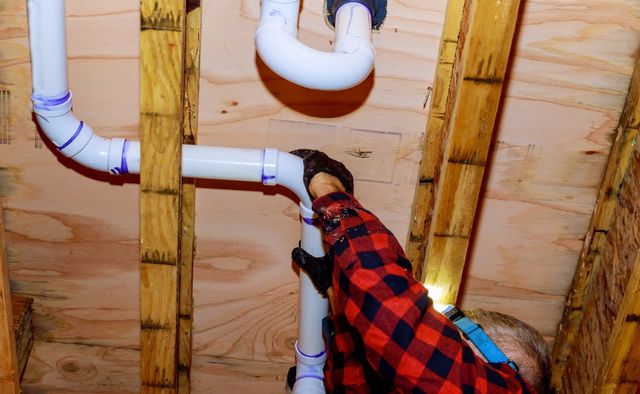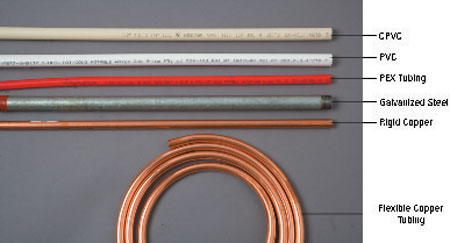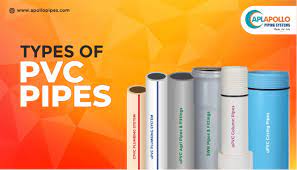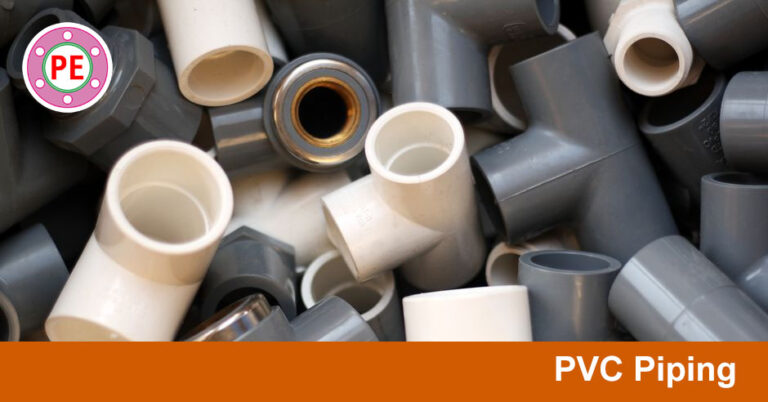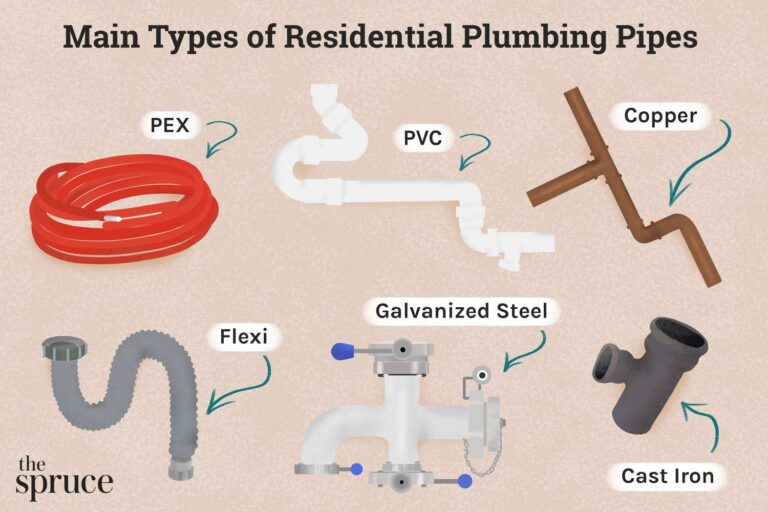Why Are Pipe Fittings Important?
Pipe fittings are essential components used in plumbing and piping systems. They allow for the connection of pipes, valves, and other components to create a secure and effective system. Pipe fittings play a critical role in ensuring that the system works properly and efficiently. They provide a way to join two pieces of piping together, create custom shapes, and control the flow of liquids or gases through the system. Pipe fittings also help ensure the safety of the system by allowing for accurate pressure and temperature control. Without pipe fittings, many plumbing and piping systems would be inefficient, unreliable, and potentially hazardous.
What are Pipe Fittings?
Pipe fittings are essential components of any complex plumbing system. They are used to join two or more sections of pipe together and allow for changes in the direction of flow, as well as providing a secure connection that prevents leakage. Pipe fittings come in a variety of shapes and sizes and are designed to withstand different pressures, temperatures, and media. There are several materials used in the manufacture of pipe fittings, including stainless steel, copper, aluminum, brass, and plastic. The type of material used depends on the application, as each material has its advantages and disadvantages. When selecting the right pipe fittings for your plumbing project, it’s important to consider the environment in which the fittings will be used, the pressure, temperature, and media that the fitting must withstand, and the size of the pipe. The right pipe fittings can help ensure a safe and efficient plumbing system.
Types of Pipe Fittings
Pipe fittings provide a secure connection between two pieces of pipe, allowing for efficient transportation of water, gas, and other liquids. They are available in a variety of materials, sizes, and shapes, making them an essential component of any plumbing system. From reducing the number of joints to providing a secure connection between pipes, there are many advantages to using pipe fittings. But what types of pipe fittings are available?
Elbows are the most common type of pipe fitting and are used to change the direction of the pipe. Tees are used to split a single pipe into two branches, while crosses are used to connect four pipes. Unions, on the other hand, are used to join two pieces of pipe together for quick disconnection. Reducers, such as concentric reducers and eccentric reducers, are used to reduce the size of a pipe, while adapters are designed to connect pipes of different sizes and materials. Finally, caps are used to seal off the end of a pipe.
Each type of pipe fitting has its own set of advantages and disadvantages. For example, elbows are the most versatile type of fitting but can be difficult to install. Tees, on the other hand, are easier to install but require more space. It’s important to consider the type of fitting you need based on the specific application.
With an understanding of the different types of pipe fittings available, you can find the right solution for your plumbing needs. From reducing the number of joints to providing a secure connection, pipe fittings are an essential component of any plumbing system.
Advantages
Pipe fittings are an essential component of any plumbing system. Pipe fittings are versatile components that are designed to connect different sections of the pipe to form a continuous passage for liquids or gases. Not only are pipe fittings important for achieving an effective plumbing system, but they also have several advantages.
One of the most important advantages of using pipe fittings is their ability to provide a secure and leak-proof connection. Pipe fittings are designed to ensure a tight seal, preventing any liquids or gases from escaping the system. This helps reduce the risk of potential leaks, which can lead to costly damage. Furthermore, pipe fittings are designed to be durable and can withstand high pressure and temperatures, making them ideal for a variety of applications.
In addition, pipe fittings are easy to install and maintain. The installation process can be completed quickly and efficiently, and pipe fittings do not require any additional tools. Furthermore, pipe fittings are available in a variety of sizes and materials, making them suitable for a range of applications. This means that they can be used in both residential and commercial plumbing systems.
Finally, pipe fittings are cost-effective and provide a great return on investment. They are designed to be long-lasting and require minimal maintenance, helping to reduce costs in the long term. Additionally, the installation process is quick and easy, meaning that the overall cost of the project can be kept to a minimum.
In conclusion, pipe fittings are essential components of any plumbing system and provide a variety of advantages. They provide a secure and leak-proof connection, are durable and can withstand high pressure and temperatures, are easy to install and maintain, and are cost-effective. For these reasons, pipe fittings are an important part of any plumbing system.

Common Applications
Pipe fittings are an essential part of any plumbing system. From simple water supply lines to complex drain systems, pipe fittings make up a significant portion of the plumbing infrastructure. As such, understanding common applications for pipe fittings is a crucial part of any professional plumber’s knowledge.
Pipe fittings are used to connect two sections of pipe, redirect the flow of a pipe, or add outlets or inlets to a pipe. Pipe fittings are commonly used in residential, commercial, and industrial buildings to regulate the flow of water, air, gas, and sewage. Additionally, pipe fittings are used in the construction of process piping, such as in the food and beverage, pharmaceutical, and petrochemical industries.
The type of pipe fitting used in each application will vary depending on the materials and type of pipe being used. Common pipe-fitting materials include copper, plastic, steel, and brass. These materials are selected based on strength, durability, and chemical resistance. Furthermore, different types of fittings are used in different applications. For example, elbow fittings are used to redirect the flow of a pipe, while couplings are used to connect two sections of pipe.
In addition to their use in plumbing systems, pipe fittings are also used in industrial equipment such as pumps, valves, and compressors. Pipe fittings are an integral part of any industrial process, and they must be chosen carefully to ensure that the process is safe and efficient.
Pipe fittings are an essential component of any plumbing system. They are used to join, redirect, and regulate the flow of pipes, and they are commonly used in residential, commercial, and industrial applications. The type of pipe fitting used in each application will vary depending on the materials and type of pipe being used. Furthermore, pipe fittings are used in industrial equipment to ensure that processes are safe and efficient.
Considerations for Selecting
Pipe fittings are an integral part of any plumbing system, and the right selection of fittings is key to the efficient and reliable performance of the system for years to come. When selecting pipe fittings, there are several important considerations to keep in mind. Firstly, it is critical to identify the type of material that the pipe fittings are made from. Different materials are used for different applications, and it is important to ensure that the fittings chosen are suitable for the intended purpose. Additionally, the size of the fittings should be appropriate for the size of the pipe that it is to be used with. It is also important to ensure that the fittings are compatible with the other pipe components and that they are properly sealed and secured. Finally, the compatibility of the fittings concerning the local building codes should also be confirmed before installation. With the right selection of pipe fittings, it is possible to ensure that the plumbing system will perform optimally and provide years of reliable service.
Maintenance
Pipe fittings are essential components of any piping system and play a crucial role in the overall performance and longevity of the entire setup. They are the connectors that join two or more pipes together and allow for the transfer of liquids or gases through the system. Maintenance of pipe fittings is essential to ensure proper functioning and extend the life of the system. Proper maintenance will reduce the risk of leaks, blockages, and other potential problems that could lead to costly repairs or replacements.
Regular inspections should be conducted to check for signs of corrosion, wear, and other potential issues. If any of these signs are noticed, the fittings should be replaced immediately. It is also important to maintain the seals on the fittings to reduce the risk of leaks. Regular maintenance can also help to identify any areas of the system that require repairs or replacements, which can prevent any further damage.
Overall, proper maintenance of pipe fittings is essential for the long-term performance and efficiency of the entire piping system. Regular inspections and maintenance should be conducted to ensure that the fittings are in good condition and functioning correctly. This will help to minimize the risk of costly repairs or replacements and can help to extend the life of the system.
FAQs About the Why Are Pipe Fittings Important?
1. What is the purpose of pipe fittings?
Answer: Pipe fittings are essential components used in plumbing and HVAC systems to connect straight pipes or tubes, adapt to different sizes or shapes, and regulate fluid flow.
2. What types of pipe fittings are available?
Answer: There are many different types of pipe fittings available including elbows, tees, couplings, unions, reducers, bushings, caps, plugs, and valves.
3. What are the benefits of using pipe fittings?
Answer: Pipe fittings provide strength and durability to plumbing and HVAC systems, are easy to install, and allow for precise regulation of fluid flow. They can also be used to seal, reduce noise, and prevent leaks.
Conclusion
Pipe fittings are an essential component of any plumbing system. They are used to join pipes together, regulate the flow of water, and provide a secure and reliable connection. Pipe fittings are important because they ensure that the plumbing system is safe and secure, and that water is flowing freely and efficiently. They help to maintain the integrity of the system, and ultimately, the health and safety of those living in the home or building.

